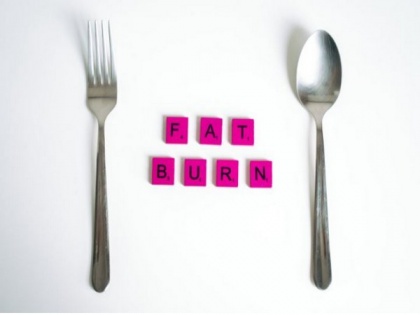Study reveals new findings for metabolic rates at different ages of life
By ANI | Published: August 13, 2021 04:05 PM2021-08-13T16:05:40+5:302021-08-13T16:15:02+5:30
A new study suggested that metabolism, the rate at which we burn calories, actually peaks much earlier and starts its inevitable decline later than we might think.

Study reveals new findings for metabolic rates at different ages of life
A new study suggested that metabolism, the rate at which we burn calories, actually peaks much earlier and starts its inevitable decline later than we might think.
The findings of the study were published in the journal 'Science'.
"As we age, there are a lot of physiological changes that occur in the phases of our life such as during puberty and in menopause. What's odd is that the timing of our 'metabolic life stages' doesn't appear to match the markers we associate with growing up and getting older," said study co-author Jennifer Rood, PhD, Associate Executive Director for Cores and Resources at Pennington Biomedical Research Center.
Four Pennington Biomedical researchers were part of an international team of scientists who analysed the average calories burned by more than 6,600 people as they went about their daily lives.
The participants' ages ranged from one week old to 95 years, and they lived in 29 different countries.
The other Pennington Biomedical scientists are Peter Katzmarzyk, PhD, Associate Executive Director for Population and Public Health Sciences; Corby Martin, PhD, Professor and Director, Ingestive Behavior Laboratory; and Eric Ravussin, PhD, Associate Executive Director for Clinical Science.
Most previous large-scale studies measured how much energy the body uses for basic vital functions - breathing, digesting, and pumping blood - the calories you need just to stay alive.
But basic functions account for just 50 per cent to 70 per cent of the calories we burn each day. They don't include the energy we spend doing everything else: washing the dishes, walking the dog, breaking a sweat at the gym, even just thinking or fidgeting.
To come up with a number for total daily energy expenditure, the researchers turned to the "doubly labelled water" method. It's a urine test that involves having a person drink water in which the hydrogen and oxygen in the water molecules have been replaced with naturally occurring "heavy" forms, and then measures how quickly they're flushed out.
Scientists have used the technique - considered the gold standard for measuring daily energy expenditure during normal daily life outside of the lab - to measure energy expenditure in humans since the 1980s.
But previous studies were limited in size and scope due to cost. To get around that limitation, multiple labs shared their data in a single database, to see if they could tease out truths hidden or only hinted at in previous studies.
Pooling and analysing energy expenditures across the entire lifespan revealed some surprises.
"Some people think of their teens and 20s as the age when their calorie-burning potential hits its peak, but the study shows that pound for pound, infants had the highest metabolic rates of all," Dr Katzmarzyk said.
Energy needs shoot up during the first 12 months of life. By their first birthdays, babies burn calories 50 per cent faster for their body size than adults.
And that's not just because infants are busy tripling their birth weight in their first year.
"The babies grow rapidly, which accounts for much of the effect. However, after you control for this, their energy expenditures tend to be higher than what you would expect for their body size," Dr Martin said.
An infant's explosive metabolism may help explain why children who don't get enough to eat during this developmental stage are less likely to survive and grow up to be healthy adults.
"More research is needed to better understand the metabolism of babies. We need to know what is driving higher energy expenditures," Dr Martin added.
After the initial surge in infancy, a person's metabolism slows by about 3 per cent each year until our 20s, when it levels off into a new normal.
Surprisingly, the growth spurts of adolescence didn't generate an increase in daily calorie needs after researchers took body size into account. Another surprise? People's metabolisms were most stable from their 20s through their 50s. Calorie needs during pregnancy grew no more than expected.
The findings suggest that other factors lie behind the so-called "middle-age spread".
The data suggested that our metabolisms don't really start to decline again until after age 60. The slowdown is gradual, only 0.7 per cent a year.
But a person in their 90s needs 26 per cent fewer calories each day than someone in midlife.
Lost muscle mass as we get older may be partly to blame, the researchers said, since muscle burns more calories than fat. But it's not the whole picture.
"We took dwindling muscle mass into account. After 60, a person's cells slow down," Dr Ravussin said.
The patterns held even when differing activity levels were taken into account.
Ageing goes hand in hand with so many other physiological changes that it has been difficult to parse what drives the shifts in energy expenditure. But the new research supports the idea that it's more than age-related changes in lifestyle or body composition.
"This study shows that the work cells do changes over the course of the lifespan in ways we couldn't fully appreciate before. But massive data sets like the one we collaborated on allow us to answer questions we couldn't address," Dr Ravussin concluded.
( With inputs from ANI )
Disclaimer: This post has been auto-published from an agency feed without any modifications to the text and has not been reviewed by an editor
Open in app